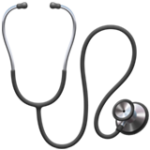 Policy Brief + Recommendations
Policy Brief + RecommendationsMy daughter is nine, and she is going through the first stages of puberty.
This is four years before I reached that stage and two years before any of my three sisters or sister-in-law hit this developmental milestone. While nine is still considered in the normal developmental range for girls in the United States, it is certainly early compared to the women in my generation.
As HBN’s Chief Research Officer, it is my job to understand the impacts that different chemicals can have on human health and work every day to help people make informed decisions about the products they use. As a mother, it is also my job to keep my kids safe. While my research will not help me answer the question about why my daughter may be going through puberty earlier than I did, I can share what I have learned about chemicals found in building materials and their potential impacts on children’s health in the hope that you can join me in making the best decisions we can for our future generations.
While this article will focus on one environmental factor (exposure to pollutants related to the use of building products), I recognize this is one of many factors that impact children’s health. These include biological factors (e.g. sex, genetics, age), social factors (e.g. income, culture), and environmental factors (e.g. diet, exposure to pollutants).1 With this in mind, this article does not tie specific products or chemicals to specific health outcomes in children. Instead, this article discusses two groups (or classes) of chemicals used in building products that are known to have reproductive toxicity or endocrine disrupting concerns and are found both in household dust and children’s bodies.
Children are not little adults. For example, my five year old likes to sleep in a small cardboard box at night these days with his neck at an angle that would take me weeks to uncrick. They also eat more, inhale more, and drink more than adults per kilogram body weight.2 They also spend more time on the floor (see box story above) and are therefore more likely to ingest or inhale household dust. Their immune and metabolic systems are not fully developed, so their bodies process and eliminate chemicals differently than adults. Lastly, children’s bodies are in a constant state of growth and development, and as such they can be more sensitive to chemicals than adults.3


Let’s explore two groups of chemicals found in building products and in children’s bodies that can impact the endocrine systems.
Bisphenols
Bisphenols are a group of chemicals including bisphenol A (BPA) and bisphenol S (BPS). BPA is on the EU Substances of Very High Concern (SVHC) list due to endocrine disrupting properties. Specifically, many bisphenols mimic the hormone estrogen. BPA is considered “Toxic to Reproduction” by the European Chemicals Agency. Bisphenols are found in many different types of products including plastic items, paper receipts, and metal food and beverage can liners. In building products, BPA-related compounds are found in “epoxy” resin products, for example, epoxy flooring adhesive and epoxy fluid-applied flooring.
In last year’s article, “There’s What In My Body?” I shared how I found BPA and BPS in my body through a biomonitoring study by Silent Spring. Compared to other participants in the study, I had lower levels of BPA but higher levels of BPS, a common replacement for BPA. I was surprised and disturbed by the results, and I cannot help but wonder what my daughter’s levels would be today if we tested for bisphenols or any of the other endocrine disrupting compounds found in household products. Levels of BPA in children are typically higher than for adults. Most importantly, even tiny amounts of endocrine disrupting chemicals, including BPA, can lead to health and behavioral problems in developing children.4 For example, increasing urinary BPA levels in children are linked to an increase in behavioral regulation problems, anxiety, and hyperactivity.
The good news is that bisphenols are rapidly metabolized. If you can identify and remove sources of bisphenols from your home and diet, you can reduce your exposure.
Orthophthalates
Orthophthalates are a group of chemicals used as plasticizers – additives that make plastics more flexible. Orthophthalates can be developmental toxicants per the U.S. National Toxicology Program.5 Some common orthophthalates interfere with the production of testosterone, which can have irreversible effects on the male reproductive system. Higher exposure to certain orthophthalates has been associated with higher incidences of preterm birth; in particular, mothers who had consistently higher exposures to orthophthalates were five times more likely to experience spontaneous preterm birth (Ferguson et al 2014, JAMA Pediatrics). Preterm birth is associated with a variety of adverse health outcomes including increase in disability as young adults.6
Orthophthalates are sometimes called “everywhere chemicals” because they are so common in household products. With respect to building products, up until recently orthophthalates were prevalent in vinyl flooring. While the vinyl flooring industry has largely phased them out of new products, many homes with vinyl flooring installed before 2015 will still likely contain orthophthalate plasticizers. Orthophthalates can also be found in sealants used throughout the home. While the sealant industry is beginning to phase out these chemicals, they are still commonly used.
Similar to bisphenols, phthalates are metabolized quickly, so identifying potential sources and removing those from the home is the easiest way to reduce exposure. Possible sources include older plastic toys, cleaning products, personal care products, sealants, older vinyl flooring (pre-2018), and fragrances.
My daughter is not an outlier. Over the last 40 years, the average age of initial onset of puberty has decreased by 12 months. There are likely multiple reasons for this trend. However, an increase in exposure to a cocktail of endocrine disruptors is a possible explanation. Collectively, we can use our voices and buying power to shift the market towards safer products.
What can you do to help?
- You can step up out of red and choose products that are ranked ideally yellow or green through Informed™
- Ask your retailer to keep products containing hazardous chemicals off of the shelves. The Mind the Store campaign by Safer Chemicals, Healthy Families encourages retailers to move away from phthalates, bisphenols, and other hazardous chemicals. Hot off of the presses is the latest Retailer Report Card. See how your favorite retailer stacks up.
- Support legislation that uses the class-based approach to ban problematic chemicals. The Green Science Policy Institute develops research and supports policies that prevent the use of “Six Classes of Harmful Chemicals”. By reducing the use of entire classes of chemicals, we reduce the chance for regrettable substitution and the inefficiencies and dangers associated with a one-at-a-time or “toxic whack-a-mole” approach to chemical restrictions. In addition to bisphenols and phthalates, GSPI’s Six Classes include per- and polyfluorinated alkyl substances (PFAS), antimicrobials, flame retardants, some solvents, and certain metals. Numerous state legislatures have passed laws restricting the use of bisphenols and phthalates in a variety of products.
SOURCES
- Commission and for Environmental Cooperation. “Toxic Chemicals and Children’s Health in North America: A Call for Efforts to Determine the Sources, Levels of Exposure, and Risks That Industrial Chemicals Pose to Children’s Health,” 2006. http://www3.cec.org/islandora/en/item/2280-toxic-chemicals-and-childrens-health-in-north-america-en.pdf.
- Miller, Mark D., Melanie A. Marty, Amy Arcus, Joseph Brown, David Morry, and Martha Sandy. “Differences between Children and Adults: Implications for Risk Assessment at California EPA.” International Journal of Toxicology 21, no. 5 (October 2002): 403–18. https://doi.org/10.1080/10915810290096630.
- Commission and for Environmental Cooperation. “Toxic Chemicals and Children’s Health in North America: A Call for Efforts to Determine the Sources, Levels of Exposure, and Risks That Industrial Chemicals Pose to Children’s Health,” 2006. http://www3.cec.org/islandora/en/item/2280-toxic-chemicals-and-childrens-health-in-north-america-en.pdf.
- Braun, Joe M., and Russ Hauser. “Bisphenol A and Children’s Health.” Current Opinion in Pediatrics 23, no. 2 (April 2011): 233–39. https://doi.org/10.1097/MOP.0b013e3283445675.
Braun, Joe M., Amy E. Kalkbrenner, Antonia M. Calafat, Kimberly Yolton, Xiaoyun Ye, Kim N. Dietrich, and Bruce P. Lanphear. “Impact of Early-Life Bisphenol A Exposure on Behavior and Executive Function in Children.” Pediatrics 128, no. 5 (November 2011): 873–82. https://doi.org/10.1542/peds.2011-1335. - “NTP-CERHR Monograph on the Potential Human Reproductive and Developmental Effects of Di-Isodecyl Phthalate (DIDP).” National Toxicology Program, U.S. Department of Health and Human Services Center for the Evaluation of Risks to Human Reproduction, NIH Publication No. 03-4485. April 2003.
- Lindström, Karolina, Birger Winbladh, Bengt Haglund, and Anders Hjern. “Preterm Infants as Young Adults: A Swedish National Cohort Study.” Pediatrics 120, no. 1 (July 2007): 70–77. https://doi.org/10.1542/peds.2006-3260.

 Health
Health